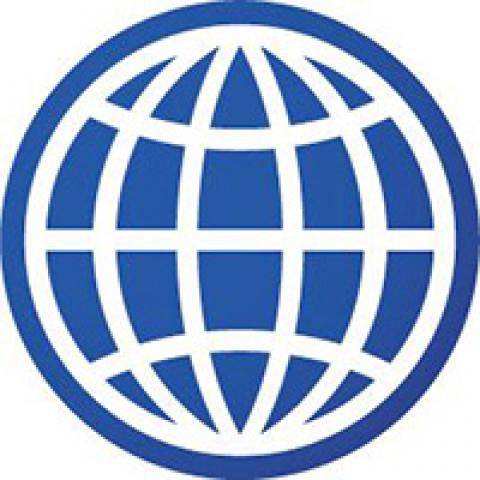Nearly a month on, horrifying details continue to trickle out from the killing of scores of civilians in Iran's southeastern city of Zahedan — the capital of Sistan-Balouchistan province and home to the ethnic Balouch community who are followers of Sunni Islam — under the Shiite-led central government.
The killings occurred on Sept. 30, a day described by government critics as "the bloody Friday" when police, members of the Islamic Revolutionary Guard Corps (IRGC) and paramilitary Basij forces gunned down at least 96 people, according to tallies documented by rights advocacy organizations. The violence was the worst in a single day since Iran was rocked by nationwide unrest triggered by the death of Mahsa Amini in the custody of the morality police in mid-September.
Prior to the Zahedan tragedy, campaigns gained momentum for protests against the alleged rape by a local police commander of a 15-year-old girl from the Sunni Balouch community in the city of Chabahar in the same province. Following Sunni Friday prayers in Zahedan's Makki Mosque, angry protesters marched toward a nearby police station, where security forces and Basij militia used live ammunition indiscriminately from rooftops. Iranian authorities say the protesters were armed, an argument rejected by activists.
Local sources in the city have confirmed to Al-Monitor that the IRGC also deployed drones to target some of the protesters in flashpoint districts, while helicopters and snipers fired randomly into the crowds.
With government-imposed internet blackouts in place, details of the killings were widely unavailable in the first few days from a city all but disconnected from the rest of the country. Yet Balouch activists say they managed to gather data and verify some witness accounts and identities. The victims, they say, include women, the elderly, the disabled and children as young as 2, some of them mere bystanders of the protest.
Amnesty International confirmed 82 deaths, among them 10 children, noting that bullets were mostly fired in the head and the chest or other vital organs.
In the fallout of the killings, a medical doctor in Zahedan dismissed the government narrative, reporting that most of the injured he treated or the bodies he saw had been shot from behind while running away, as opposed to the government statements that they were attacking with arms in their hands. "Shame on you! You are the most brutal forces history has seen," the doctor wrote in condemnation of the government forces.
As those accounts gradually came out, other Iranians launched campaigns online calling for blood donations as Zahedan hospitals were found overwhelmed with hundreds of wounded. "From Zahedan to Tehran, we will sacrifice our souls for Iran," protesters chanted in other cities to put a spotlight on the bloodshed and amplify the voices of the Balouch community.
Iran's state media reported that the clashes were provoked by "terrorists" and left only 19 dead. They also confirmed six deaths among government forces, including that of the influential head of the provincial branch of the IRGC Intelligence Organization.
Government-run outlets laid the blame on Jaish ul-Adl (Army of Justice), a militant group that has been fighting for the rights of religious and ethnic minorities and has in the past claimed many attacks on security forces. Yet the group has denied any involvement this time. In a statement, Jaish ul-Adl said it had been inactive during the Mahsa Amini protests so as not to provide the government with an excuse to link ordinary protesters to opposition groups. Still, the militants vowed that following "the massacre of the Sunni worshipers," their position has now changed "and we will enter the battlefield to hold the regime accountable."
'Khamenei cannot evade responsibility'
Mowlawi Adbul-Hamid, the popular Sunni cleric who led the Friday prayers on the day of the killings, called on locals to exercise restraint and allow officials to investigate and hold the perpetrators to account.
However, the cleric's patience appeared to have worn thin due to the weekslong failure of those officials to address the tragedy. He broke free from his typical moderate approach and took a swipe at Supreme Leader Ayatollah Ali Khamenei in a rare fiery speech Oct. 21.
"The supreme leader of the Islamic Republic, as the commander-in-chief of the armed forces, as well as other officials are all responsible, and no one can evade this responsibility," he said, rejecting as "absolute lies" the government account that the protesters were "terrorists."
"Under whose order did you open fire in a place where God is worshipped?" he asked, expressing "disbelief" at how authorities were "resorting to silence" in the face of the killings of the Sunni worshippers.
Following the speech, an IRGC news outlet hit out at the Sunni cleric, giving him the "last warning" that he will "pay a big price."
'We are not separatists'
In the aftermath of the killings, many members of the Balouch community clawed their way onto social media — despite the internet disruptions — to challenge the state narrative that described the protesters as "separatists."
They have shared the agony of the ethnic community during decadeslong discrimination and marginalization, which critics argue has been "systematically" imposed by the Islamic Republic.
Alarming levels of unemployment and poverty and lack of educational and professional opportunities compared to other Iranian provinces have pushed Sistan-Balouchistan to the bottom of the national lists in most welfare indices.
The area has also historically proven an easy target for the Islamic Republic when it comes to crushing dissent, with the "separatism" and "terrorism" cards in store to be pulled and played.
Most notably, due to the same marginalization, the Iranian government has denied official birth certificates to thousands of Balouch community members, leaving them effectively deprived from an array of services, education and mobility onto the social ladder.
The campaign group Haalvsh, counting the deaths in the Zahedan massacre, highlighted the same in the context of the killings, saying a number of victims have yet to be identified as they were among those without registered identities.








